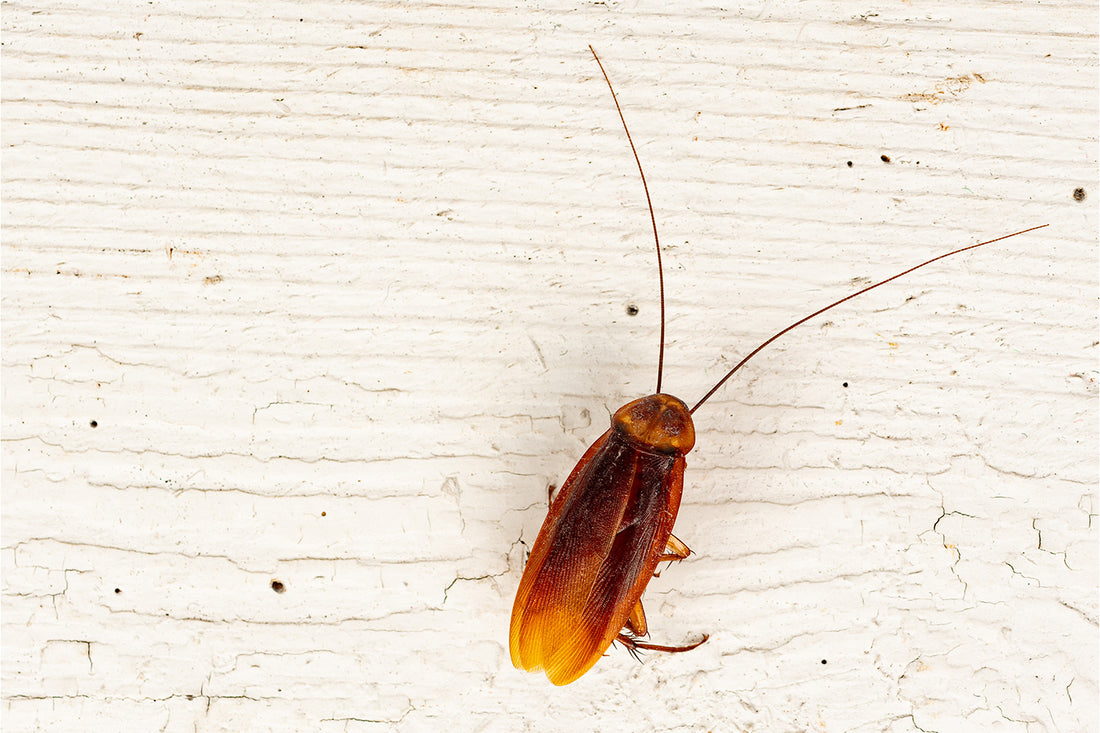How To Get Rid of Palmetto Bugs
- person Gary Tramer
- calendar_today
- comment 0 comments

If you find an unidentified bug crawling or flying around your home, what species you think it is will depend on a few factors. You might need to go in for a closer look to be able to nail it down by its physical characteristics. If you choose to go that route, it is most helpful to pay attention to its size, coloring, its antennae, and how many legs it has.
You might think back to other bugs that you regularly find in or around your home. For instance, if you live near a body of standing water, such as a pond or a lake, you might be all too used to seeing mosquitoes almost constantly. As a result, if you ever see a small flying insect in your house, it would lead you to expect it to be a mosquito.
Finally, you might consider the possible species of bug by what region you live in. Not only will this dictate what types of insects are more common where you live and in what climates, but it could also change what you call a certain kind of bug.
If you live somewhere that is consistently warm or humid all year, the chances are that a bug who prefers dryer climates will not appear. In that case, it might be worth doing more research into a more likely suspect for this insect’s species.
Depending on where you live, you might find that the likely culprit is a palmetto bug.
What Are Palmetto Bugs?
When it comes to palmetto bugs, you might only hear about them in certain areas of the United States. That does not mean that they cease to exist elsewhere, simply that using that name is not as common.
Palmetto bugs are known by another more common moniker elsewhere. It is a name that inspires fear in the hearts of both city folk and rural dwellers alike: the cockroach.
Are Palmetto Bugs and Cockroaches the Same?
It is true that what many of us in other regions of the US, North America, and other continents refer to as “cockroaches” are known regionally as “palmetto bugs.” However, there are a few factors to note when using this term.
When people say “palmetto bugs,” they are referring to a few different species of cockroaches. This makes it slightly less of a catch-all term since it is more specific than just saying “cockroach.”
However, things can get a bit more complicated when beetles come into the mix. Some people say “palmetto bug” to refer to various species of beetles. Just when you thought you had these little insects figured out, they keep on changing.
As a result, “palmetto bug” is generally used more in reference to a certain class of moderately sized brown bugs found in specific parts of the United States rather than any one species.
What Kinds of Cockroaches Are Called Palmetto Bugs?
Since the definition of “palmetto bug” can be relatively subjective, exterminators and other experts will sometimes need more information to go off of. Also, it will give you your best shot of getting rid of these pests for good if you know exactly what you are dealing with.
While our list doesn’t include every insect that could possibly qualify as a palmetto bug, these are a few of the most common ones.
The American Cockroach
First up on our list is an old classic. We mean “classic” in a not-quite-so-fun way, for the record. This cockroach isn’t as American as baseball or apple pie.
Instead, it is as American as a six-legged creature walking around under cover of darkness and eating garbage. Is that very American? It’s hard to say.
American cockroaches tend to live outdoors, but seeing them inside is also possible. When they’re outside, they tend to prefer damp, humid, wet areas. This leads them to sewers, gutters, and more.
Clearly, they have great taste in vacation homes. In fact, American cockroaches are the most common species of cockroaches to call the sewers their home.
When they aren’t taking a cruise through an underground sewer, they can typically be found in commercial buildings where food is common. Their preference for dark areas means that they will often be hidden during the day, and may only come out at night to feed.
The Smokybrown Cockroach
The key differentiator between the smokybrown cockroach and other variations of this insect (such as the American cockroach) is its darker coloring. Where the American cockroach has a reddish brown exterior, the smokybrown cockroach, appropriately, has an exterior that is both smoky and brown.
Their coloring is so smoky and brown that it has been likened to mahogany. Some of these bugs can even appear close to black.
Like other cockroaches, they are shiny and prefer to live in humid environments. Unlike the American cockroach, who prefers larger buildings when they venture indoors, this species loves nothing more than a damp basement. This bug mostly populates the Southeastern United States. But they have been known to venture further west and north on occasion.
The Florida Woods Cockroach
Last on the list of cockroaches who are often called “palmetto bugs” is the Florida woods cockroach. It’s hard to call a cockroach “special,” but these bugs do have one aspect that sets them apart from the others. Unlike many species of cockroaches, the Florida woods cockroach is unable to fly.
We can’t say for sure if this makes the Florida woods cockroach feel inadequate, but it would be hard for it not to. For instance, if one of our kids went to school and discovered that most of their classmates could turn invisible, they probably wouldn’t be very happy about it.
Don’t worry: that’s going to be the last time we humanize palmetto bugs in this article before talking about how to get rid of them. The Florida woods cockroach is a fairly large species of cockroach. They typically range from one and one-fifth inches to one and three-fifths inches (or 30 to 40 millimeters).
Whether it is due to the heat and humidity of the Southeastern U.S. (where it makes its home) or another cause altogether, these bugs are notoriously slow-moving. Where other cockroaches may scurry away quickly, the Florida woods cockroach seems content to take its sweet time.
Why Are They Called Palmetto Bugs?
Palmetto bugs earn their name due to the flora found in the region in which this moniker is popular (which we will explore more in a bit). Palmetto trees, also known as the Sabal Palm, are typically found in warm, coastal areas. Incidentally, they also offer an excellent place for cockroaches to crawl up and live around.
People first started calling cockroaches and other similar insects “palmetto bugs” simply due to the frequency with which they are on or around this kind of tree. The huge leaves of this kind of palm tree offer a great deal of cover and shade for cockroaches to hide in during the day, which is especially important in hot climates.
Where Do People Use the Name “Palmetto Bug”?
You might have noticed a slight pattern in our list of cockroaches that are often called palmetto bugs. From their different sizes to their possession or lack of wings to their preferred indoor environments, they might not appear to have much in common. However, it is important to focus on where in the United States they can be found.
The smokybrown cockroach is found in the southern U.S. Not surprisingly, the Florida woods cockroach is found in the Southeastern U.S., primarily in Florida. Meanwhile, the American cockroach can be found all over the country, but it often calls the southeast its home.
At this point, you have likely guessed that this pseudonym is the most common in the Southeastern U.S., in states like Florida, Georgia, Alabama, and more. The reason that this name is not popular in other regions of the country is that many of these areas do not have palm trees. Without palmetto trees to hide around, palmetto bugs can’t earn their name.
How To Naturally Repel Palmetto Bugs
So many of the techniques usually utilized to get rid of bugs involve harsh chemicals that are dangerous for us, our kids, and our pets. Thankfully, there are also strategies that employ safer and more organic means, which we greatly prefer.
There are so many benefits to essential oils. There’s a reason why we put them in so many of our patches, after all. Whether you want to alleviate a headache, encourage your child to focus, or simply make your home smell like an oasis, essential oils can help. Although they clearly offer a plethora of benefits to people, the same cannot be said for how they interact with palmetto bugs.
Essential Oils That Repel Palmetto Bugs
The most effective way to deal with an infestation is to avoid it happening at all. Be sure to seal any cracks in the foundation of your home, and double-check that all windows and doorways are properly protected. If there are any structural issues that allow bugs to get into your home, they will be more than happy to take the opportunity.
You can also use several essential oils to tell cockroaches that this is not a suitable environment for them. By using a diluted form of these oils with water, you can spray the mixture around areas where cockroaches could frequent or in places where they could enter your home.
Here are a few of the most popular and effective essential oils to repel palmetto bugs:
- Rosemary oil
- Eucalyptus oil
- Cypress oil
- Citronella oil
- Tea tree oil
Essential Oils That Kill Palmetto Bugs
If step one fails and you have wound up with palmetto bugs in your home, it might be time to bring out the big guns. By that, we mean to step up from essential oils that repel palmetto bugs and upgrade to one that actively eliminates them. You can employ the same method of diluting the oil with water to make it safer to use around the home.
There is one primary essential oil that is used most often to get rid of palmetto bugs, and it’s the ever-popular peppermint oil. Not only is peppermint oil toxic to palmetto bugs, but you can also enjoy the residual effects of this fresh scent in your home. Peppermint oil has many benefits for people, such as helping with coughs and reducing stress.
Bye Bye, Palmetto Bugs
By knowing what to expect from palmetto bugs, we can ensure our homes are free of them. Luckily, with essential oils, there are ways to treat the problem without introducing more chemicals into our lives.
Sources:
Florida Woods Cockroach – Eurycotis floridana (Walker) | University of Florida

